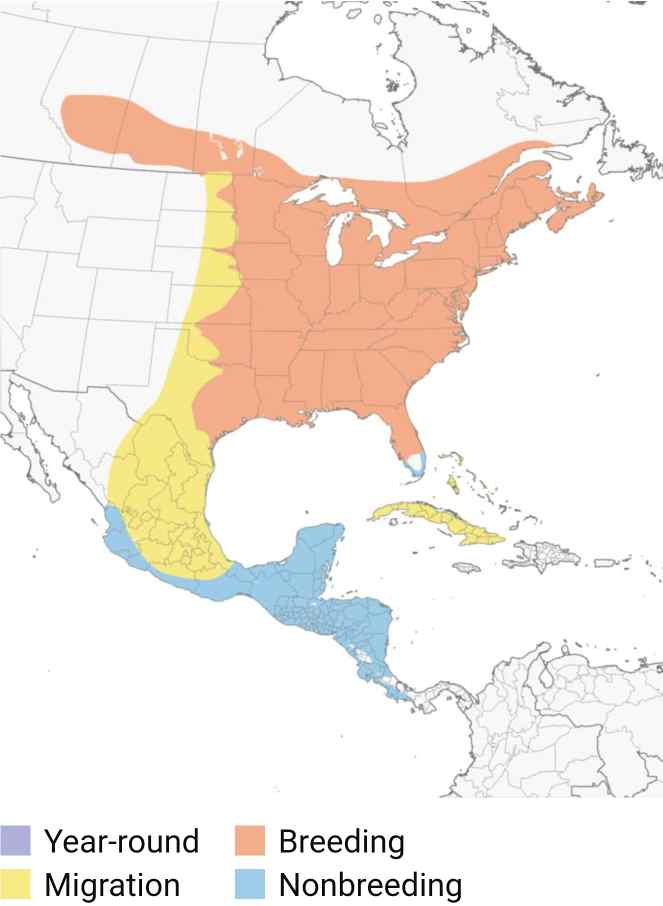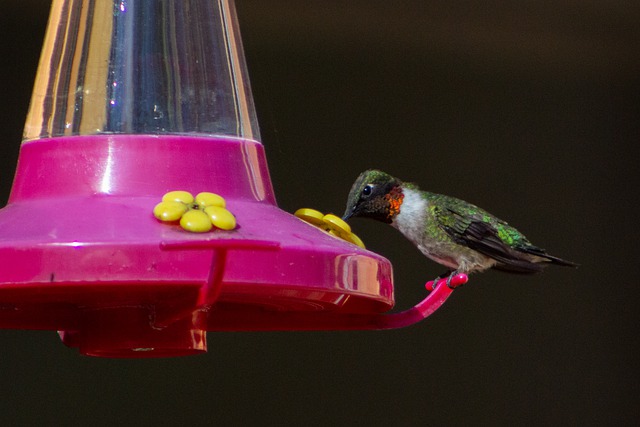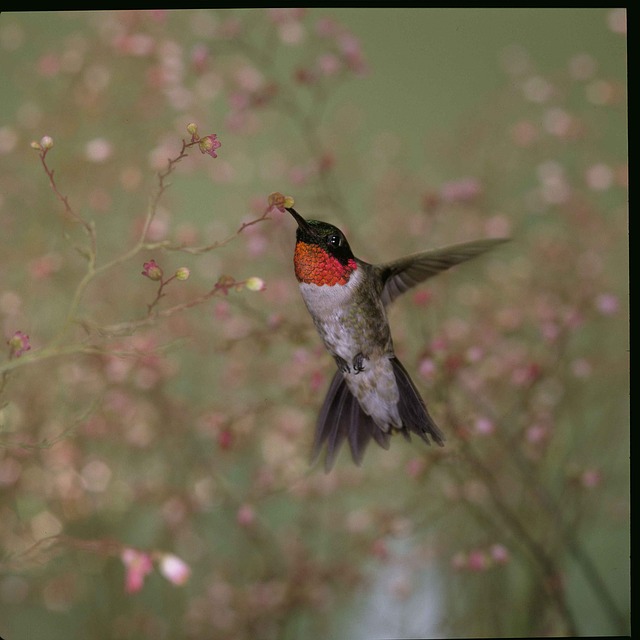Hummingbirds tend to migrate as soon as a few factors within their local environment are triggered.
A ruby-throated hummingbird will migrate as a result of theses environmental factors which includes the angle of the sun changing i.e less daylight, in search of a better food source and due to the weather as winter will limit their food pool a good amount.
Ruby-throated hummers have 2 migrations period every year back and forth from the northern gulf of Mexico all the way through Central America, the southern Atlantic coast or even the tip of Florida until they reach upper America for the breeding season. The nothern journey starts around February and ends in the beginning of May whilst southern migration begins around August and ends within December.
How Long Do Ruby-throated Hummingbirds Migrate For?
A ruby-throated hummingbird can migrate for multiple hundreds if not thousands of miles, typically making way from Canada or the Upper America to Panama from northern Mexico in the fall and vice versa when the sun’s angle changes and the the need to journey for breeding purposes as well as food supplies becomes more important.
Ruby-throated hummingbirds travel north between February – May and South between August – December.
How Far Does A Ruby-throated Hummingbird Travel When Migrating?

Although the process of migration for the majority of the ruby-throated species extends within those 4 months, the actual time within which they complete their migration either north or south can be achieved within a single day.
The distance to migrate for some can amass upwards of 1200 miles in travel distance. On average a hummingbird may travel between 23 miles per day however, when migrating the distance covered increases significantly. This is because 500 – 600 miles will be covered whilst the Ruby-throated hummers will travel non-stop for 18 – 22 hours!
Covering such a large sector of America within 24 hours means they will use up a ton of energy throughout. Therefore, often these tiny feathered machines eat an exuberant amount of food increasing their weight two-fold or more.
Taking into account these mini birds only weigh 4 grams, the fact they literally eat a value equal to themselves, not once but twice every year is mind-boggling. Especially looking at it from the point of view a human.
A 100% weight increase is no joke and you’d think it’d slow them down but nope.
Maybe their agility could lessen a bit but it’s a small sacrifice to make considering the non-stop journey the ruby-throats will be making.
Do Ruby-throated Hummingbirds Travel In Flocks?

Ruby-throated hummingbirds are generally solitary migraters so no they don’t travel in flocks.
Occasionally, they may travel in a mixed flock but in most instances they just make a straight, solo journey to their destination, the upper regions of America and lower Canada.
Why Do Ruby-throated Hummingbirds Migrate?
They make their way north and south every year mostly in search of food as the winter months will significantly reduce the amount of flower pollen available. Daylight hours decreasing also contributes to this migration as hummers require a large food source to maintain their lifestyle and life as whole.
The summer destinations allow them to do this which is obviously perfect for the Ruby-throated hummer.
Mating and breeding is the other reason why. This is also the reason why male ruby-throated hummingbirds make their way to few days to weeks before the females.
It’s so they can first locate their own territory which they will use to court the female hummers.
Hummingbirds as a whole have between 1 – 3 clutch periods, which is what the migration periods accommodate for and the summer weather is just better suited for incubating hummingbird eggs and finding more sources of food to help in raising them.
Do Ruby-throated Hummingbirds Return To The Same Location Every Year?

Hummingbirds as a whole have very good memory therefore, very often they will make their way back to a feeder that they used in the past.
However, if the feeder isn’t there or if the food source just isn’t tasty enough, ruby-throated hummers will have to look for another supply do accommodate their needs.
Summary
Ruby-throated hummingbirds, much like other hummingbirds, tend to make their way south or north depending on the daylight hours within their previous location and to find better food sources.
Male and female ruby-throated hummingbirds also mate shortly after arriving at their destinations.
It’s just a regular cycle that occurs twice every year and won’t be stopping anytime soon, unless daylight somehow is able to stay a lot longer within their habitats throughout winter.
References
https://www.perkypet.com/articles/ruby-throated-hummingbird-migration
https://www.hummingbirdcentral.com/hummingbird-migration.htm#:~:text=Research indicates a hummingbird can,stop, depending on wind conditions.
https://www.hummingbird-guide.com/hummingbird-mating.html
https://www.hummingbird-guide.com/hang-hummingbird-feeders.html
https://www.allaboutbirds.org/guide/Ruby-throated_Hummingbird/maps-range
Amhil Khan, a dedicated nature enthusiast and the founder of BirdsOfTheWild.com, is a passionate advocate for the captivating world of avian wonders. With a deep-seated curiosity about the intricate lives of birds, Amhil’s journey began as a fascination and has evolved into a mission to inspire others to appreciate and protect these magnificent creatures.
Amhil’s love for birds led to the creation of Birds of the Wild, a platform where his expertise in ornithology, coupled with his captivating storytelling, provides readers with an immersive and educational experience. Through his lens and words, he captures the essence of birds in their natural habitats, offering a glimpse into their behaviors, migrations, and the ecosystems they inhabit.

